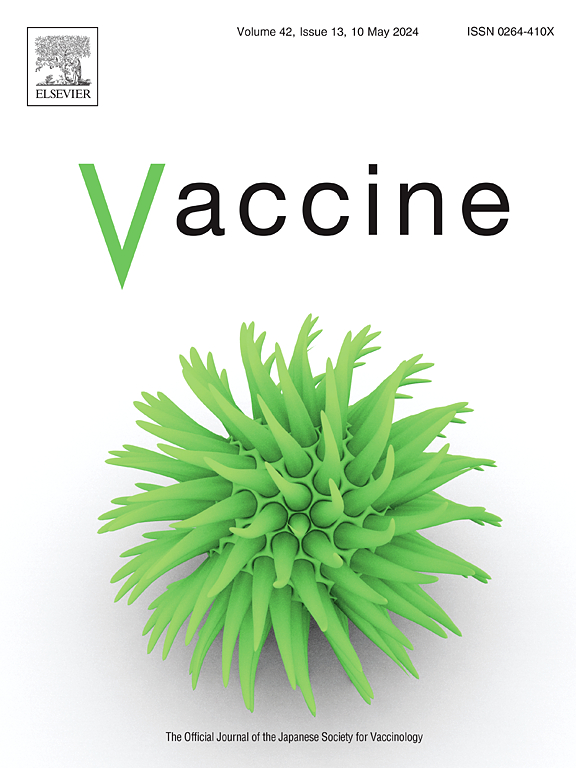在研制改良流感疫苗方面取得的成就和面临的挑战:对朝着流感疫苗研发路线图里程碑所取得的三年进展的评价
IF 4.5
3区 医学
Q2 IMMUNOLOGY
引用次数: 0
摘要
为了减轻流感的公共卫生负担和加强大流行防备,需要流感疫苗对季节性流感提供更有效的免疫力,并对具有大流行潜力的各种新出现的流感病毒提供保护。流感疫苗研发路线图(IVR)于2021年发布,作为推进流感疫苗研发的战略规划工具。在IVR发布后,实施了为期3年的监测、评估和调整(ME& a)计划,以评估实现IVR中概述的里程碑的进展情况。截至2025年5月中旬,93个里程碑中有16个(17%)已经完成或部分完成,大多数(67个;72%)处于不同的进展阶段。在被指定为高优先级的35个里程碑中,5个(14%)已经完成或部分完成,29个(83%)正在进行中,1个(3%)没有确定进展。主要成就包括:建立纵向队列研究,按年龄、时间和疫苗产品描述对流感病毒感染和疫苗接种的免疫反应;在临床前和临床开发中建立创新流感疫苗技术的综合格局;推进下一代广泛保护性流感候选疫苗进入临床试验;确定在COVID-19大流行期间加快SARS-CoV-2疫苗开发的相关经验教训;并开始制定改进流感疫苗的全面价值评估(FVIVA),以便为投资提供信息并指导全球最终采用改进疫苗。持续存在的挑战包括阐明产生持久和广泛保护性免疫的免疫机制,加强对免疫印记和粘膜免疫在预防感染和传播中的作用的理解,确定保护的相关因素,以及探索广泛保护性流感疫苗许可的监管选择。IVR me&a项目为持续对流感疫苗研发进展进行严格审查提供了基础,为研究重点和资助决策提供信息。本文章由计算机程序翻译,如有差异,请以英文原文为准。
Accomplishments and challenges in developing improved influenza vaccines: An evaluation of three years of progress toward the milestones of the influenza vaccines research and development roadmap
Influenza vaccines that provide more effective immunity to seasonal influenza as well as protection against a broad range of emerging influenza viruses with pandemic potential are needed to reduce the public-health burden of influenza and enhance pandemic preparedness. The Influenza Vaccines Research and Development (R&D) Roadmap (IVR) was published in 2021 to serve as a strategic planning tool to advance influenza vaccine R&D. Following IVR publication, a 3-year monitoring, evaluation, and adjustment (ME&A) program was implemented to assess progress in meeting the milestones outlined in the IVR. As of mid-May 2025, 16 (17%) of the 93 milestones had been accomplished or partially accomplished, with the majority (67; 72%) in various stages of progress. Of the 35 milestones designated high-priority, five (14%) had been accomplished or partially accomplished, 29 (83%) are in progress, and no progress was identified for one (3%). Key accomplishments include: establishing longitudinal cohort studies to characterize immune responses to influenza virus infection and vaccination by age over time and by vaccine product; creating a comprehensive landscape of innovative influenza vaccine technologies in preclinical and clinical development; advancing next-generation and broadly protective influenza vaccine candidates into clinical trials; identifying relevant lessons learned from accelerated SARS-CoV-2 vaccine development during the COVID-19 pandemic; and initiating development of a full value of improved influenza vaccine assessment (FVIVA) to inform investment and guide the eventual uptake of improved vaccines globally. Persistent challenges include clarifying immune mechanisms for generating durable and broadly protective immunity, enhancing understanding of immune imprinting and the role of mucosal immunity in preventing infection and transmission, identifying correlates of protection, and exploring regulatory options for broadly protective influenza vaccine licensure. The IVR ME&A program provides a basis for ongoing critical review of progress in influenza vaccine R&D to inform decision-making on research priorities and funding.
求助全文
通过发布文献求助,成功后即可免费获取论文全文。
去求助
来源期刊

Vaccine
医学-免疫学
CiteScore
8.70
自引率
5.50%
发文量
992
审稿时长
131 days
期刊介绍:
Vaccine is unique in publishing the highest quality science across all disciplines relevant to the field of vaccinology - all original article submissions across basic and clinical research, vaccine manufacturing, history, public policy, behavioral science and ethics, social sciences, safety, and many other related areas are welcomed. The submission categories as given in the Guide for Authors indicate where we receive the most papers. Papers outside these major areas are also welcome and authors are encouraged to contact us with specific questions.
 求助内容:
求助内容: 应助结果提醒方式:
应助结果提醒方式:


